
STM32F103C8T6,STM32F407VET6,STM32F103RCT6,STM32F405RGT6 Difference
yunying Release time:2023-12-22 Page View:440
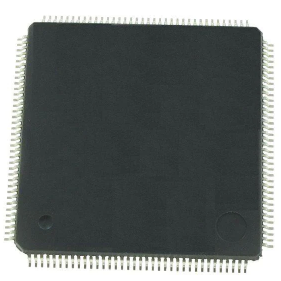
This post is about A Comparative Analysis of STM32F103C8T6, STM32F407VET6, STM32F103RCT6, and STM32F405RGT6 Microcontrollers
- Introduction
- STM32F103C8T6,STM32F407VET6,STM32F103RCT6,STM32F405RGT6 Pinout & CAD-Model
- STM32F103C8T6,STM32F407VET6,STM32F103RCT6,STM32F405RGT6 Package Infomation
- STM32F103C8T6,STM32F407VET6,STM32F103RCT6,STM32F405RGT6 Diagram
- STM32F103C8T6,STM32F407VET6,STM32F103RCT6,STM32F405RGT6 Applications
- STM32F103C8T6,STM32F407VET6,STM32F103RCT6,STM32F405RGT6 Application Circuit
- STM32F103C8T6,STM32F407VET6,STM32F103RCT6,STM32F405RGT6 Difference
- Conclusion
- Product comparison
Introduction
Microcontrollers play a crucial role in modern electronic devices, enabling them to perform a wide range of tasks efficiently. Among the numerous microcontrollers available in the market, the STM32 series from STMicroelectronics stands out for its versatility and performance. In this article, we will compare and contrast four popular STM32 microcontrollers: STM32F103C8T6, STM32F407VET6, STM32F103RCT6, and STM32F405RGT6. By examining their specifications, features, and capabilities, we aim to provide you with a comprehensive understanding of their differences.
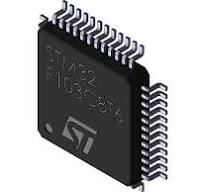
STM32F103C8T6 Reference Image
![2585191fd86d4abca5fb92264116b2c5.png VW59H0XF%LWUNR])8{2PN@6](https://www.xinshop.com/upload/image/content/20231227/2585191fd86d4abca5fb92264116b2c5.png)
STM32F407VET6 Reference Image
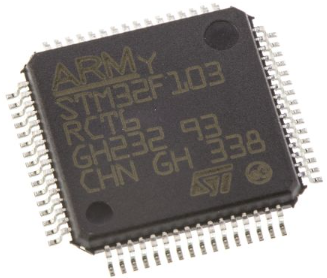
STM32F103RCT6 Reference Image
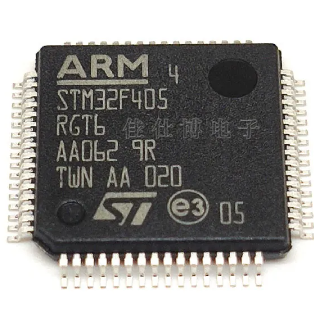
STM32F405RGT6 Reference Image
STM32F103C8T6,STM32F407VET6,STM32F103RCT6,STM32F405RGT6 Pinout & CAD-Model
1. STM32F103C8T6:
Pinout
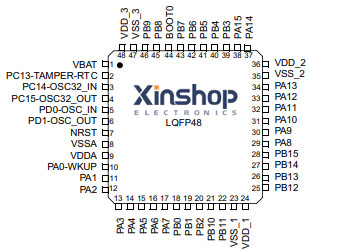
CAD-Model
Symbol
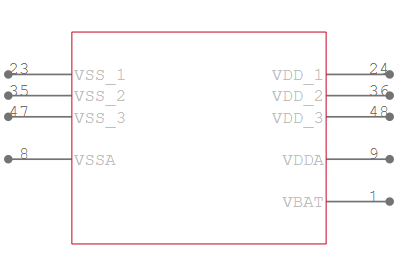
Footprint
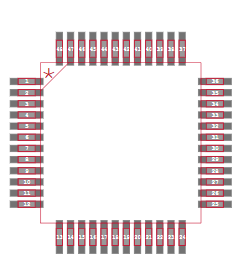
3D-model
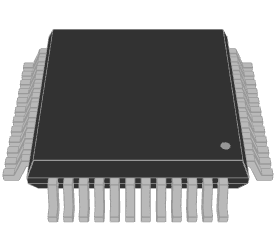
The STM32F103C8T6 microcontroller, commonly known as "Blue Pill," is based on the ARM Cortex-M3 core. It features 64KB of Flash memory, 20KB of RAM, and operates at a maximum frequency of 72MHz. It offers various communication interfaces, including USART, SPI, and I2C, making it suitable for a wide range of applications. The STM32F103C8T6 is often preferred for cost-sensitive projects due to its low price.
2. STM32F407VET6:
Pinout
CAD-Model
Symbol
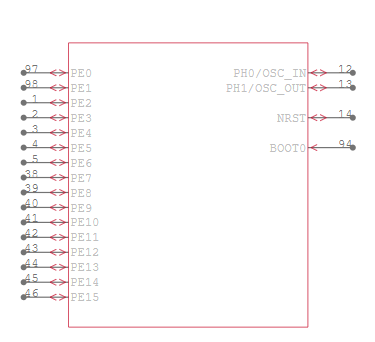
Footprint
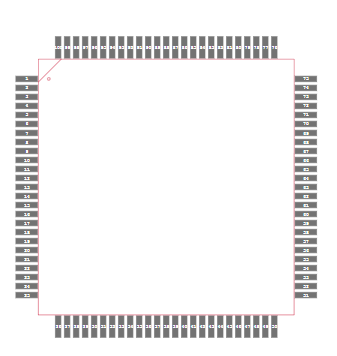
3D-model
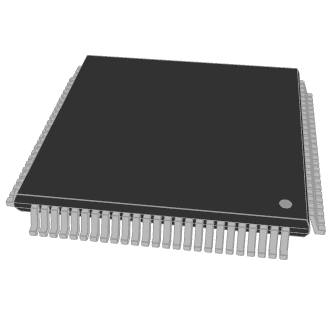
The STM32F407VET6 microcontroller is part of the STM32F4 series and is based on the ARM Cortex-M4 core. It offers significantly more processing power compared to the STM32F103C8T6, with a maximum operating frequency of 168MHz. The microcontroller includes 512KB of Flash memory, 192KB of RAM, and a Floating-Point Unit (FPU), which enhances its computational capabilities. It also provides a wide range of peripherals, such as USB, Ethernet, and CAN, making it suitable for applications that require high-performance processing and connectivity.
3. STM32F103RCT6:
Pinout
CAD-Model
Symbol
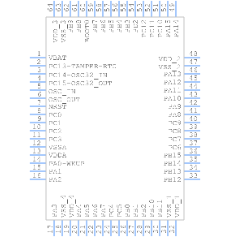
Footprint
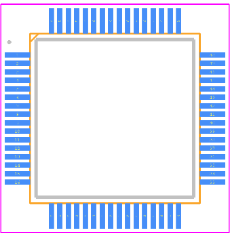
3D-model
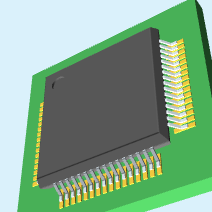
The STM32F103RCT6, also from the STM32F1 series, is similar to the STM32F103C8T6 in terms of core architecture (ARM Cortex-M3) and clock frequency (72MHz). However, it offers twice the amount of Flash memory, with 128KB, and 20KB of RAM. This microcontroller retains the same peripheral options as the STM32F103C8T6, making it a suitable choice for projects that require more program storage.
4. STM32F405RGT6:
Pinout
CAD-Model
Symbol
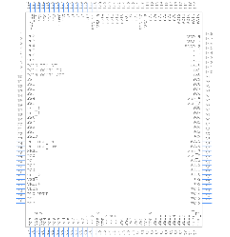
Footprint

3D-model
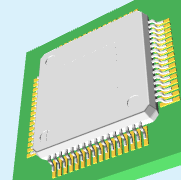
The STM32F405RGT6 is part of the STM32F4 series, similar to the STM32F407VET6, and is based on the ARM Cortex-M4 core. It operates at a maximum frequency of 168MHz and provides 1MB of Flash memory, 192KB of RAM, and an FPU. This microcontroller also offers a rich set of peripherals, including USB, Ethernet, CAN, and SDIO, making it suitable for applications that demand high-performance processing and advanced connectivity options.
STM32F103C8T6,STM32F407VET6,STM32F103RCT6,STM32F405RGT6 Package Infomation
STM32F103C8T6,STM32F407VET6,STM32F103RCT6,STM32F405RGT6 Diagram
STM32F103C8T6,STM32F407VET6,STM32F103RCT6,STM32F405RGT6 Applications
STM32F103C8T6,STM32F407VET6,STM32F103RCT6,STM32F405RGT6 Application Circuit
STM32F103C8T6,STM32F407VET6,STM32F103RCT6,STM32F405RGT6 Difference
Key Differences:
1. Processing Power: The STM32F407VET6 and STM32F405RGT6 microcontrollers offer higher processing power due to their ARM Cortex-M4 core and higher clock frequency compared to the STM32F103C8T6 and STM32F103RCT6, which are based on the ARM Cortex-M3 core.
2. Flash and RAM: The STM32F407VET6 and STM32F405RGT6 provide larger Flash and RAM capacities, offering more room for program storage and data manipulation compared to the STM32F103C8T6 and STM32F103RCT6.
3. Peripheral Options: While all microcontrollers offer various communication interfaces, the STM32F407VET6 and STM32F405RGT6 provide additional advanced peripherals like Ethernet, USB, CAN, and SDIO. These peripherals are not available in the STM32F103C8T6 and STM32F103RCT6, limiting their connectivity options.
4. Price: The STM32F103C8T6 is often preferred for cost-sensitive projects due to its lower price point, making it a popular choice among hobbyists and budget-oriented applications. In contrast, the STM32F407VET6 and STM32F405RGT6 are priced higher due to their enhanced capabilities and larger memory options.
Conclusion
The STM32F103C8T6, STM32F407VET6, STM32F103RCT6, and STM32F405RGT6 microcontrollers offer different levels of performance, memory capacity, and peripheral options. Choosing the right microcontroller depends on the specific requirements of your project, including processing power, memory requirements, and connectivity needs. Understanding the differences between these microcontrollers will help you make an informed decision and select the most appropriate one for your application.
Product comparison
-
ImagePart NumberManufacturerToleranceVoltage - RatedProduct StatusPackage / CaseProduct CategoryView Compare
-
-
-
-
48-LQFP
Microcontrollers
-
-
-
-
64-LQFP
Microcontrollers
-
-
-
-
100-LQFP
Microcontrollers

Frequently Asked Questions
-
1,000+Daily Order Quantity
-
2,500,000+Alternative Parts
-
2,200+Worldwide Manufacturers
-
10,000 ㎡In-stock Warehouse





























